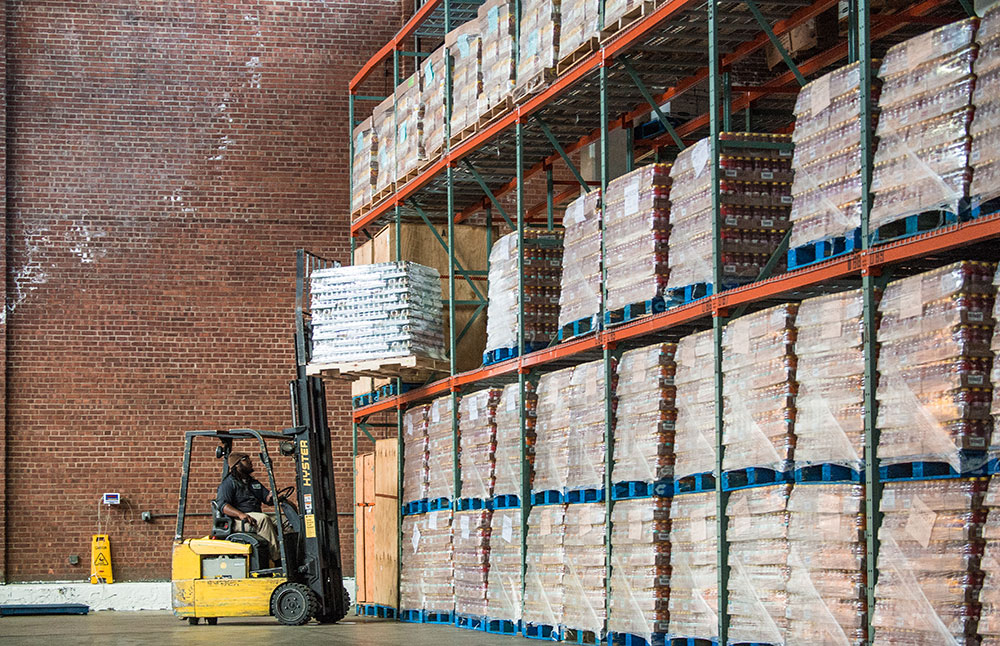BSI shares its 2020 assessment on the impact COVID-19 lockdowns had on supply chains and predictions for how it will impact the year ahead.

20150916 OSEC LSC 0185 by USDA gov is marked with CC PDM 1.0
By Jim Yarbrough, Global Intelligence Program Manager, BSI
As organizations reflect on 2020, the biggest challenges many businesses faced stemmed from the COVID-19 pandemic. Direct and indirect impacts of the pandemic will continue to upset supply chain operations and create several emerging challenges and persistent risks around cargo theft, human rights, smuggling, cargo disruption, and regulatory compliance in the year ahead.
Many of the concerns BSI monitored last year resulted in disrupted business operations and created regulatory changes as a result of COVID-19 lockdowns and consumer demand for certain products. Specifically, thieves in 2020 increasingly stole food and beverage commodities and alcohol and tobacco products, likely due to the product types’ heightened value resulting from panic-buying, stockpiling, and shortages. Thieves in 2020 also stole consumer products, such as hand sanitizer and cleaning supplies, as well as medical devices and supplies, including personal protective equipment, at elevated rates in many regions due to their high demand and subsequent shortages. Criminals employed additional strategies to obtain this cargo by targeting facilities in addition to parking lots and in-transit vehicles.
Globally, as lockdowns continue into 2021, criminals may continue to target warehouse facilities where items are stockpiled due to transportation capacity shortages and lowered demand. However, if countries begin to ease lockdowns, it is also likely that criminals will revert back to traditional cargo theft patterns, such as hijackings in South Africa and Latin American countries. Additionally, a shift in the methods and routes used by drug smugglers will create challenges for supply chains across the globe. Lockdowns closing borders and mobility bans cutting off traditional supply chains throughout 2020 decreased the ability for criminals to secure precursor chemicals. To offset this problem, drug smugglers adapted by generating new smuggling routes, creating risks to port security, and emphasizing the importance of vigilance with changing drug smuggling trends.
Due to the economic impact of COVID-19 last year, economic hardships are shaping up to impact the globe continuing into 2021, and with them propelling the risk of labor exploitation, human rights violations, and stowaway smuggling. While the movement of people through supply chains was on a downturn during the first half of 2020, new stowaway smuggling routes emerged later in the year, along with increased labor risks. In particular, while the pandemic initially slowed movement into the U.S, caravans and stowaway detections eventually picked back up in frequency. Looking ahead to 2021, there is potential for a higher risk of stowaways in Arizona- and California-bound cargo. Furthermore, while Texas is historically the most common area for migrant passage, increased traffic among the Gulf and Pacific routes in Mexico signal an upturn in migrants passing through the region.
The economic downtown impacted migrants and children especially hard in America, Asia, Europe, and Africa. Lack of school, combined with decreased family incomes, suggests a greater potential for child labor in the upcoming year. Specifically, the lack of labor rights enforcement in Latin America and Asia are creating problematic situations for vulnerable populations. Additionally, specific industries that were disproportionally impacted by the pandemic may look to cheap labor sources in the upcoming year, posing a threat to laborers, overall supply chains, and organizations’ reputation.
An additional risk exacerbated by the COVID-19 pandemic was the prevalence of man-made disruptions throughout 2020, a trend that is expected to carry into 2021, already causing disruptions early this year. On a global scale, protests broke out over governments’ response to handling the pandemic, despite strict lockdowns. Labor strikes also occurred largely due to issues stemming from the economic downturn. Government corruption is playing a larger role in political unrest and demonstrations more recently. The instability of political structures and government corruption are likely to be drivers of political disruptions into 2021.
Additionally, regulatory changes focused on eradicating threats to sustainability, human rights, and other issues from business operations will play a large role in 2021. Due to trending issues in human rights violations across the globe, with forced and child labor contributing to a large part of the workforce, regulatory bodies are focusing efforts on imposing sanctions and other standards to decrease the presence of this human rights violation. In 2020, U.S. Customs & Border Protection issued multiple withhold release orders (WROs) on imports due to forced and child labor concerns. Additionally, issues of sustainability in supply chains and the sustainable sourcing materials will play an increased role in how companies operate as governments and regulatory bodies crack down on companies, creating an environment where vetting suppliers and understanding each level of the supply chain is crucial for a resilient organization. As industry leaders contend with these looming challenges in the upcoming year, leveraging supplier management and risk intelligence platform will allow them to understand and proactively manage risk.

Jim Yarbrough
Jim Yarbrough | Global Intelligence Program Manager
Jim Yarbrough leads BSI’s team of supply chain risk analysts and assesses the potential threat of security, corporate social responsibility, and business continuity risks to countries and businesses worldwide. These assessments are integral to the Supply Chain Risk Exposure Evaluation Network (SCREEN) tool. He also provides information and analysis about the threat to international cargo to governments around the world and to a number of Fortune 500 companies.
In this episode, I sat down with Beejan Giga, Director | Partner and Caleb Emerson, Senior Results Manager at Carpedia International. We discussed the insights behind their recent Industry Today article, “Thinking Three Moves Ahead” and together we explored how manufacturers can plan more strategically, align with their suppliers, and build the operational discipline needed to support intentional, sustainable growth. It was a conversation packed with practical perspectives on navigating a fast-changing industry landscape.